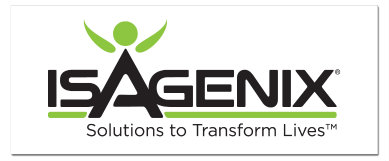“Cage-Free” Egg Carton Labeling Misconceptions
Think you understand everything when it comes to food labeling? Think again! I thought I was up and up on what type of food products I was purchasing when it came to egg. I tell my children- "these eggs labeled "cage-free" means the hens get to roam around in beautiful green pastures like on grandpa's farm". WRONG! Get to know your egg labels here from the Humane Society of the United States:
October 8, 2010
Egg Carton Labels
A brief guide to labels and animal welfare
The vast number of consumer labels affixed to egg cartons can leave a shopper feeling dazed and confused. One carton may label its eggs "Natural." Another carton may call them "Free Range," while yet another may claim its eggs are "Certified Organic." How are thoughtful consumers supposed to know what these labels and claims really mean?
The truth is that the majority of egg labels have little relevance to animal welfare or, if they do, they have no official standards or any mechanism to enforce them.
The Labels†
Certified Organic: The birds are uncaged inside barns or warehouses, and are required to have outdoor access, but the amount, duration, and quality of outdoor access is undefined. They are fed an organic, all-vegetarian diet free of antibiotics and pesticides, as required by the U.S. Department of Agriculture's National Organic Program. Beak cutting and forced molting through starvation are permitted. Compliance is verified through third-party auditing.
Free-Range: While the USDA has defined the meaning of "free-range" for some poultry products, there are no standards in "free-range" egg production. Typically, free-range hens are uncaged inside barns or warehouses and have some degree of outdoor access, but there are no requirements for the amount, duration or quality of outdoor access. Since they are not caged, they can engage in many natural behaviors such as nesting and foraging. There are no restrictions regarding what the birds can be fed. Beak cutting and forced molting through starvation are permitted. There is no third-party auditing.
Certified Humane: The birds are uncaged inside barns or warehouses but may be kept indoors at all times. They must be able to perform natural behaviors such as nesting, perching, and dust bathing. There are requirements for stocking density and number of perches and nesting boxes. Forced molting through starvation is prohibited, but beak cutting is allowed. Compliance is verified through third-party auditing. Certified Humane is a program of Humane Farm Animal Care.
Animal Welfare Approved: The highest animal welfare standards of any third-party auditing program. The birds are cage-free and continuous outdoor perching access is required. They must be able to perform natural behaviors such as nesting, perching and dust bathing. There are requirements for stocking density, perching, space and nesting boxes. Birds must be allowed to molt naturally. Beak cutting is prohibited. Animal Welfare Approved is a program of the Animal Welfare Institute.
American Humane Certified: This label allows both cage confinement and cage-free systems. Each animal who is confined in these so-called "furnished cages" has about the space of a legal-sized sheet of paper. An abundance of scientific evidence demonstrates that these cages are detrimental to animal welfare, and they are opposed by nearly every major US and EU animal welfare group. Forced molting through starvation is prohibited, but beak cutting is allowed. Compliance is verified through third-party auditing. American Humane Certified is a program of American Humane Association.
Cage-Free: As the term implies, hens laying eggs labeled as "cage-free" are uncaged inside barns or warehouses, but they generally do not have access to the outdoors. They can engage in many of their natural behaviors such as walking, nesting and spreading their wings. Beak cutting is permitted. There is no third-party auditing.
Free-Roaming: Also known as "free-range," the USDA has defined this claim for some poultry products, but there are no standards in "free-roaming" egg production. This essentially means the hens are cage-free. There is no third-party auditing.
Food Alliance Certified: The birds are cage-free and access to outdoors or natural daylight is required. They must be able to perform natural behaviors such as nesting, perching and dust bathing. There are specific requirements for stocking density, perching, space and nesting boxes. Starvation-based molting is prohibited. Beak cutting is allowed. Compliance is verified through third-party auditing. Food Alliance Certified is a program of the Food Alliance.
United Egg Producers Certified: The overwhelming majority of the U.S. egg industry complies with this voluntary program, which permits routine cruel and inhumane factory farm practices. Hens laying these eggs have 67 square inches of cage space per bird, less area than a sheet of paper. The hens are confined in restrictive, barren battery cages and cannot perform many of their natural behaviors, including perching, nesting, foraging or even spreading their wings. Compliance is verified through third-party auditing. Forced molting through starvation is prohibited, but beak cutting is allowed. This is a program of the United Egg Producers.
Vegetarian-Fed: These birds' feed does not contain animal byproducts, but this label does not have significant relevance to the animals' living conditions.
Natural: This label claim has no relevance to animal welfare.
Fertile: These eggs were laid by hens who lived with roosters, meaning they most likely were not caged.
Omega-3 Enriched: This label claim has no relevance to animal welfare.
†Virtually all hens in commercial egg operations—whether cage or cage-free—come from hatcheries that kill all male chicks shortly after hatching. The males are of no use to the egg industry because they don't lay eggs and aren't bred to grow as large or as rapidly as chickens used in the meat industry. Common methods of killing male chicks include suffocation, gassing and grinding. Hundreds of millions of male chicks are killed at hatcheries each year in the United States.




